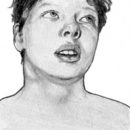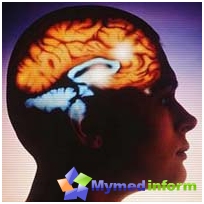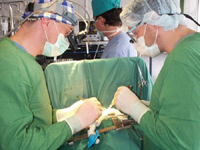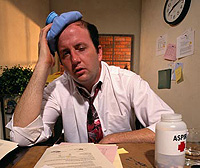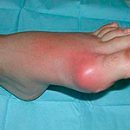Symptoms of pulmonary artery thromboembolis depend on the degree of thrombosis. An early manifestation of the disease is the pain in the chest, increasing on the breath. Next joins shortness of breath, the respiratory frequency is increased to 60 movements per minute.
Content
The main symptoms of pulmonary thromboembolism
For thromboembolism of the pulmonary artery, a sharp start is characterized, and often the first symptoms occur at the moment of fitting (with defecation, cough, lifting weights). If there is no lightning death, depending on the level of the introduction of the thrombus and the condition of the patient manifestation of the disease can be diverse.
Early symptom of thromboembolism of the pulmonary artery is often pain in the chest without a displacement, sometimes imitating angina and amplifying on inhale. It is characteristic of the early ones of shortness of breath with a frequency of breathing up to 30-60 respiratory movements in 1 minute, shortness of breath continues even alone. Perhaps mental and motor excitement (occasionally there is an injury).
Characteristic symptoms of pulmonary artery thromboembolism:
- Sharp exhausting weakness
- sweating
- Dry irritating cough
On 2-3 days from the beginning of the disease, hemochkali is marked, in some cases - small pulmonary bleeding. With pulmonary artery thromboembolism, it is possible to increase the body temperature in the first day, less often - within a few days. Rising respiratory failure manifests itself with shortness of breath and widespread sinusiness with severe arterial hypoxemia (lack of oxygen in the blood).
The development of an acute pulmonary heart syndrome is characterized by the emergence of the syncity of the limbs, swelling of the cervical veins, progressive tachycardia (rapid heartbeat), heart rate disorders. Due to the rapid development of decompensation under the states of the acute pulmonary heart, the so-called abdominal syndrome may become the prevailing manifestation of the pulmonal artery thromboembolism:
- nausea
- vomit
- Sharp pain in the right upper abdominal square
Often manifestations of pulmonary artery thromboembolism include:
- Acute arterial hypotension
- acute coronary insufficiency syndrome
- Cerebral syndrome in the form of various neuropsychiatric disorders (sharp dizziness, sudden muscle weakness, acknowledging or loss of consciousness, sometimes epileptiferous convulsions, the appearance of focal neurological symptoms and signs of brain edema)
With extensive hemorrhage in the light in the blood, the level of indirect bilirubin increases, which is accompanied by pale yellow staining of the scler and leather.
For massive thromboembolism of the pulmonary artery, as a rule, a sharp flow with a rapid increase in the symptoms of severe pulmonary hypertension, the thromboembolism of the pulmonary trunk or both of its branches with a reduction in blood flow by 75% and more leads to instant death.
Options for the course of the disease
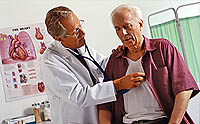 The subacute course (often up to several weeks) is noted more often in the embolism of equity or segmental branches with prolonged (extended) thrombosis. In these cases, the persistent decrease in blood pressure, acute heart rate disorders, expressed worldwood failure, prognostically unfavorable.
The subacute course (often up to several weeks) is noted more often in the embolism of equity or segmental branches with prolonged (extended) thrombosis. In these cases, the persistent decrease in blood pressure, acute heart rate disorders, expressed worldwood failure, prognostically unfavorable.
The recurrent flow of small branches with re-occurrence of pulmonary apoplexy (hemorrhages), heart attacks and pleurisites and gradual development of chronic pulmonary heart. The infarction of the lung is sometimes complicated by spontaneous (spontaneous) pneumothorax or (more often) exudative pleurite.
Significant destruction of lung tissue leads to an acute abscess. The organization of infarction ends with the formation of pneumosclerotic foci, bronchiectasis, petrifators (foci of occurrence).


